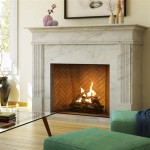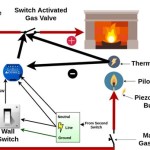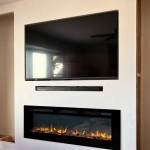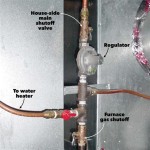Creating a Cozy Outdoor Oasis: The Covered Patio With Fireplace
The incorporation of a covered patio with a fireplace represents a significant investment in outdoor living space. This design choice extends usability beyond seasonal limitations and provides a focal point for entertainment and relaxation. The strategic placement of such a structure can enhance property value and create a seamless transition between indoor and outdoor environments.
Planning a covered patio with a fireplace necessitates careful consideration of various factors including local building codes, spatial constraints, material selection, and integration with existing architectural styles. Addressing these factors proactively ensures a functional, aesthetically pleasing, and compliant outdoor living area.
Understanding Building Codes and Regulations
Prior to commencing any construction, a thorough understanding of local building codes and regulations pertaining to outdoor fireplaces and covered structures is paramount. These codes often dictate specific requirements regarding setbacks from property lines, chimney heights, ventilation, and fire safety measures. Failure to comply with these regulations can result in costly delays, fines, and even mandatory modifications to the finished structure.
The initial step involves contacting the local building department to obtain information regarding permit requirements. This process often requires the submission of detailed architectural plans illustrating the dimensions, materials, and location of the proposed patio and fireplace. The plans must adhere to established zoning ordinances and structural engineering standards. Certain jurisdictions may also require inspections at various stages of the construction process to verify compliance with code requirements.
Fireplace regulations are particularly stringent due to the inherent fire risk. These regulations typically address the type of fuel permitted (wood, gas, propane), the construction materials used for the firebox and chimney, and the required clearances from combustible materials. The use of spark arrestors on chimneys is often mandated to prevent embers from escaping and potentially igniting nearby vegetation or structures. Gas or propane fireplaces necessitate adherence to specific plumbing and gas line installation codes, typically requiring licensed professionals for installation and inspection.
Covered patios are also subject to specific structural requirements, particularly regarding roof load capacity and support systems. The structural design must account for factors such as snow load, wind load, and seismic activity, depending on the geographic location. The support columns and roof structure must be engineered to withstand these forces and maintain structural integrity over time.
Furthermore, considerations should be given to accessibility requirements as outlined in the Americans with Disabilities Act (ADA). If the covered patio is intended to be accessible to the public or is located on a commercial property, it may be necessary to incorporate features such as ramps, wider pathways, and accessible seating areas.
Optimizing Spatial Planning and Design
The successful integration of a covered patio with a fireplace hinges on careful spatial planning and design. The size and layout of the patio should be proportional to the overall property and the intended use of the space. Considerations should be given to factors such as seating capacity, traffic flow, and the placement of other outdoor amenities such as grills, dining tables, and landscaping features.
The fireplace itself serves as a natural focal point and should be strategically positioned to maximize its visual impact and functional benefit. Common placement options include positioning the fireplace along a rear wall, creating a central gathering area, or incorporating it as a feature within an outdoor kitchen. The orientation of the fireplace should also be considered in relation to prevailing winds to minimize smoke interference.
The design of the covered structure should complement the existing architectural style of the house and seamlessly integrate with the surrounding landscape. Design options range from simple open-air structures with a roof and supporting columns to more elaborate enclosures with walls, windows, and screens. The choice of design will depend on the desired level of weather protection, privacy, and aesthetic appeal.
Consideration of solar orientation is also important. A south-facing patio will receive maximum sunlight exposure, which can be beneficial during cooler months but may require shading solutions during the summer. An east-facing patio will be ideal for morning gatherings, while a west-facing patio will provide afternoon shade but may experience intense heat during sunset. Strategic placement of trees, shrubs, or retractable awnings can help mitigate excessive sunlight and create a more comfortable outdoor environment.
Lighting plays a crucial role in creating ambiance and extending the usability of the covered patio into the evening hours. A combination of ambient lighting, task lighting, and accent lighting can be used to achieve the desired effect. Ambient lighting can be provided by string lights, lanterns, or recessed ceiling lights. Task lighting can be incorporated to illuminate specific areas such as a grill or outdoor kitchen. Accent lighting can be used to highlight architectural features or landscaping elements.
Selecting Appropriate Materials for Durability and Aesthetics
The selection of appropriate materials is critical for ensuring the durability, longevity, and aesthetic appeal of the covered patio with a fireplace. The materials chosen should be resistant to weathering, insect damage, and fire hazards, while also complementing the overall design scheme.
For the patio surface, options include concrete, pavers, natural stone, and composite decking. Concrete is a durable and cost-effective option, but can be prone to cracking and staining. Pavers offer a more aesthetically pleasing option and are available in a wide range of colors, shapes, and sizes. Natural stone provides a timeless and elegant look, but can be more expensive to install. Composite decking is a low-maintenance option that resists weathering and insect damage, but may not have the same natural look as wood or stone.
The fireplace can be constructed from a variety of materials, including brick, stone, concrete block, and stucco. Brick is a classic material that provides a traditional look and is highly resistant to fire. Stone offers a more rustic and natural aesthetic. Concrete block is a cost-effective option that can be finished with stucco or other decorative materials. The chimney should be constructed from fire-resistant materials such as brick, stone, or metal flue liners.
The covered structure can be framed with wood, metal, or composite materials. Wood is a traditional and aesthetically pleasing option, but requires regular maintenance to prevent rot and insect damage. Metal framing is more durable and resistant to weathering, but can be more expensive. Composite materials offer a low-maintenance alternative to wood, but may not have the same natural look and feel.
For roofing materials, options include asphalt shingles, metal roofing, tile, and wood shakes. Asphalt shingles are a cost-effective option, but have a shorter lifespan than other materials. Metal roofing is durable and long-lasting, but can be more expensive. Tile provides a classic and elegant look and is highly resistant to fire. Wood shakes offer a rustic and natural aesthetic, but require regular maintenance to prevent rot and insect damage.
In addition to structural materials, consider the selection of outdoor furniture and accessories. Choose materials that are weather-resistant and easy to clean. Options include wrought iron, aluminum, teak, and synthetic wicker. Upholstery fabrics should be durable and fade-resistant. Consider incorporating outdoor rugs, cushions, and throws to add comfort and style to the space. Select accessories such as planters, lanterns, and outdoor art to personalize the patio and create a welcoming atmosphere.
Incorporating sustainable materials into the design can also enhance the environmental impact of the project. Consider using reclaimed wood, recycled concrete, or locally sourced stone. Choose energy-efficient lighting fixtures and appliances. Plant native vegetation to reduce water consumption and provide habitat for wildlife. By making conscious choices about materials and design, it is possible to create a beautiful and sustainable outdoor living space.
:max_bytes(150000):strip_icc()/bring-holidays-outside-x-50f80e4865984b36b603a1de82d2938b.jpg?strip=all)
Glowing Outdoor Fireplace Ideas

Outdoor Fireplaces Paradise Red Landscaping

Covered Patio Designs For Outdoor Fireplaces Undercover Eoyment Design Fireplace

Michigan S Premier Design And Build Company For Outdoor Fireplaces Built In Fire Pits Ventures

30 Outdoor Fireplace Ideas Cozy Fireplaces

Cross Creek Patio Cover With Fireplace Outdoor Living

40 Best Patio Ideas With Fireplace Traditional Designs For Outdoor Living

Keep Warm With These Outdoor Fireplace Ideas Chester Pa

Adding A Fireplace Or Fire Pit To Your Patio Remodel Project

How To Build An Outdoor Fireplace Step By Guide Buildwithroman








